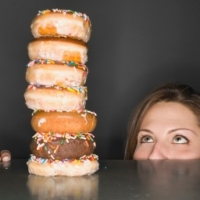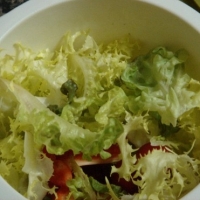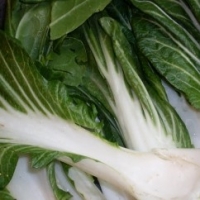1 of 28
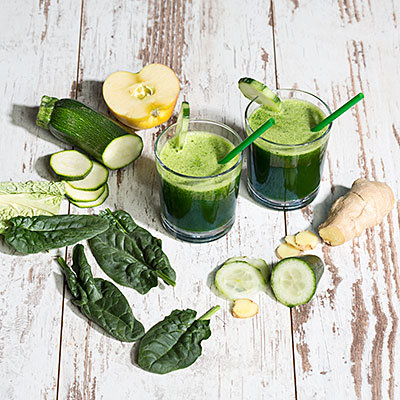
Myth: A detox is a good way to make a clean start
"Most of the time, detox diets are more like a crash diet," says Melissa Rifkin, MS, RD, a bariatric dietitian at Montefiore Health System in New York City. "They restrict certain food groups and sometimes deprive the body of adequate calories and nutrition for a short period of time." In fact, detox diets are notorious for causing weight gain: "When the body feels deprived and then foods are reintroduced, our bodies will regain more weight as if in fear of another starvation or restriction," Rifkin says. If a detox appeals to you, consult with your doctor on whether or not the benefits it promises are the real deal.
2 of 28
3 of 28
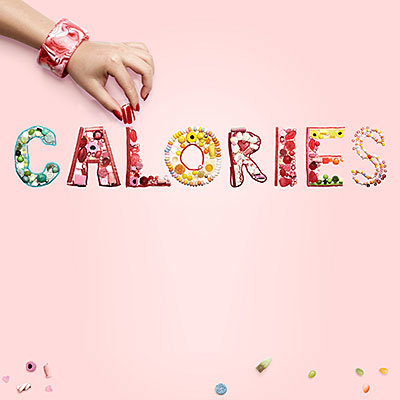
Myth: Cut 3,500 calories, lose a pound
While "calories in vs. calories out" may be the foundation of slimming down, it's not the only equation at work. Yes, you need to burn more calories than you consume in order to lose weight, but the weight you lose will be a combination of fat, lean tissue, and water—and your body's metabolism will adapt to those losses, making the math a bit more complicated. For a better sense of what your personal calorie intake and activity levels should be, plug your personal details into the National Institutes of Health's Body Weight Planner, which will use your current weight and target weight to calculate the right numbers for you.
3 of 28
4 of 28
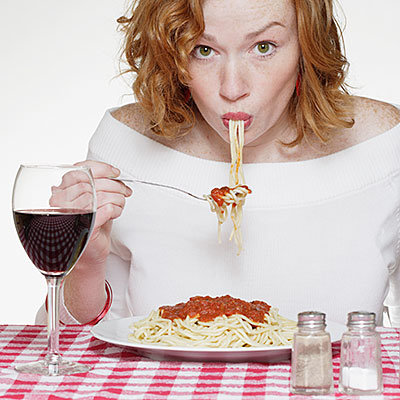
Myth: Carbs are the enemy
Between the low-carb and Paleo crazes, we've all learned to fear the bread basket. But you don't have to eliminate carbohydrates from your diet to lose weight and be healthier. In fact, healthy carb sources such as fruits and vegetables, nuts, seeds, whole grains, and beans and legumes (aka pulses) are an important, nutrient- and fiber-rich part of any diet. (However, experts agree you should aim to cut down on refined carbs, including white rice, white pasta, processed snacks, and sweets.)
4 of 28
5 of 28

Myth: If you want results, you have to hit the gym hard
Resolving to exercise regularly is well and good, but asking your body to adapt to a rigorous new routine overnight can backfire. "This can lead to injury or burnout, which keeps you from participating in any exercise at all," says Abraham Krikhely, MD, a bariatric surgeon at ColumbiaDoctors in New York City. "It's demoralizing and can lead to behaviors that cause even more weight gain. For most people, it can be much more effective and sustainable to gradually build muscle and tolerance, and do those exercises you enjoy."
5 of 28
6 of 28
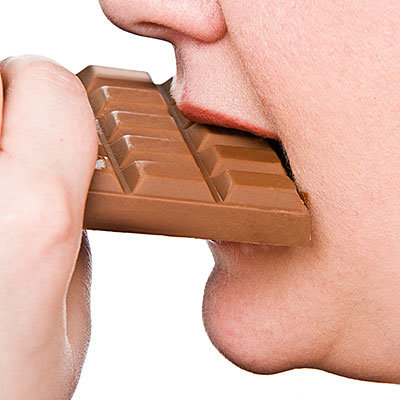
Myth: Fat makes you fat
Watch the video: 7 Healthy High-Fat Foods You Should Be Eating
Not so: "In a review of 53 randomized controlled trials lasting a year or more, high-fat diets consistently beat out low-fat diets for weight loss," says Mark Hyman, MD, director of the Cleveland Clinic Center for Functional Medicine and author of Eat Fat, Get Thin ($28; amazon.com). "Fat, it turns out, cuts your appetite, boosts your calorie burning and prevents fat storage, while sugar and refined carbs do the opposite." Cutting out sugar and refined carbs, eating mostly vegetables with some fruit, and then consuming fat (in the form of olive oil, avocados, nuts and seeds, coconut butter, and grass-fed or sustainably and organically raised animal foods) is "the fastest and most effective way to create sustained weight loss," he says.
6 of 28
7 of 28
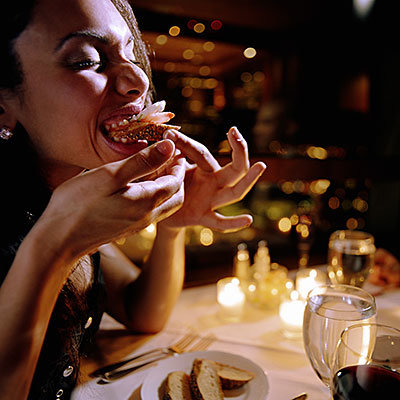
Myth: Late-night meals lead to weight gain, period
While some research has associated late-night calorie intake with higher BMI, the debate about when we should or shouldn't eat dinner is far from over. "My favorite weight-loss myth is 'Don't eat after 7 p.m.,' says Rifkin. "But if you wake up late, 7 p.m. might be too early to cut yourself off from food. My suggestion is to eat within an hour to two hours of waking, don't go for more than four to six hours between meals, and don't eat two hours before bed. That structure is helpful for creating a good meal-timing foundation."
7 of 28
8 of 28
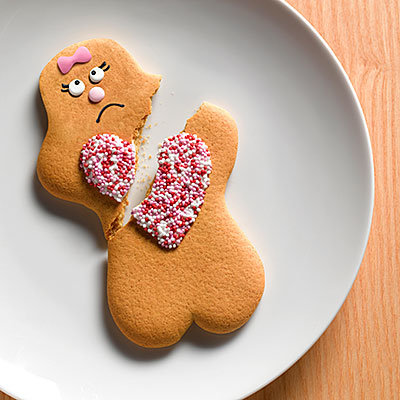
Myth: Certain treats just have to go
Banishing favorite foods in the context of a diet isn't sustainable; it's far more effective to eat the foods you love in a more mindful way instead of avoiding them completely. "Sit down, savor them, be aware of portions," says Susan Albers, PsyD, a clinical psychologist at the Cleveland Clinic specializing in weight-loss and eating issues and author of 50 More Ways to Soothe Yourself Without Food ($17; amazon.com). "Chocolate lovers can practice eating a one-ounce square of chocolate mindfully each day; doing so will take out the power and craving, and teach you that you can be in control."
8 of 28
9 of 28

Myth: A little competition will keep you motivated
"It's essential not to compare yourself to others," says Albers. "Our bodies are like a fingerprint; no two are remotely the same. Not only can trying to match someone else's weight loss goals be way off from what is realistic for you, but it can be discouraging." The best guidepost for your goals is, logically enough, your own "best version" of yourself; working your way back into your own favorite pair of jeans makes infinitely more sense than worrying about your gym buddy's progress.
9 of 28
10 of 28
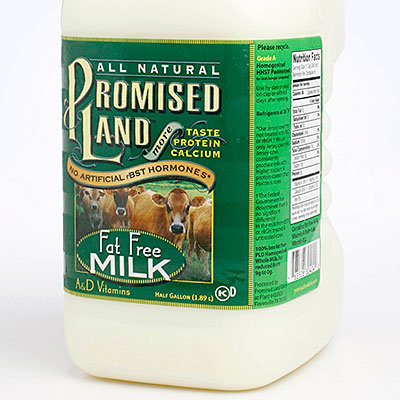
Myth: Low-fat foods will help you lose weight
Surprise: Many low-fat foods (and reduced-fat and fat-free foods) have just as many calories as the full-fat versions, and they may even contain more sugar and additives to help them taste better without the fat. And a low-fat label can lead you to overeat, thanks to the "health halo" cast by those magic words. In many cases, you may be better off eating a smaller (but more satisfying) portion of the real deal. With salad dressing, for example, the full-fat version can actually be healthier: Fat helps your body absorb important nutrients from the veggies in your salad.
10 of 28
11 of 28

Myth: It takes a lot of time and effort to lose weight
In a perfect world, we'd all have time each day to fit in a workout and prepare satisfying-yet-healthful meals for our families and ourselves. But the reality is that most of us don't have that time and never will—so we should be careful not to fall into the trap of what Albers calls the "wait-until approach." "Waiting until life 'settles down' is a recipe for disaster," she says. "Come to terms with the fact that life will always be filled with stress and unpredictable events. Now is the time to get started." You don't have to overhaul your daily routine—small tweaks can have big results!
11 of 28
12 of 28

Myth: It's bad to cheat on your diet
On the contrary: By intentionally building a couple of so-called "cheats" into your weekly eating plan—high-quality sweets like a scoop of premium ice cream, cocktails with your girlfriends, a slice of your favorite pizza, or even bacon on your salad—you can enjoy your meals more and avoid feeling deprived, making you much more likely to stay on track long-term. Budget 200-300 calories for each indulgence, and you won't derail the virtuous decisions you've been making the rest of the week.
12 of 28
13 of 28

Myth: If you're exercising a lot, you don't really have to watch what you eat
Once that love affair with spin classes finally takes off and you're working hard, it's tempting to treat yourself as a reward. "However, the amount of calories you burn from exercise is often modest when compared with the calories you can influence by changing your diet," Dr. Krikhely says. (Thirty minutes of running, for example, burns around 320 calories—you could cancel that out with one frozen margarita!) "It's important to develop healthy habits that involve both nutrition and exercise."
13 of 28
14 of 28
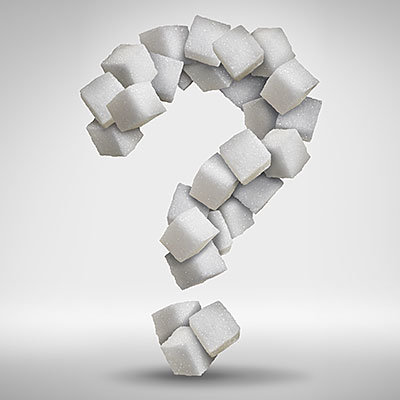
Myth: All sugar is the enemy
"Processed sugars like table sugars should be avoided at all costs; in fact, the new dietary guidelines recommend no more than 200 calories per day from sugar," Rifkin says. However, you don't have to shun naturally occurring sugars (like in fruit or dairy). That said, "the key here is moderation," she continues. "Pairing a sugar and protein source (such as an apple and peanut butter) is always a smart idea in order to maintain good glycemic control. When we have sugar spikes, we tend to get shaky and crave more sugar."
14 of 28
15 of 28
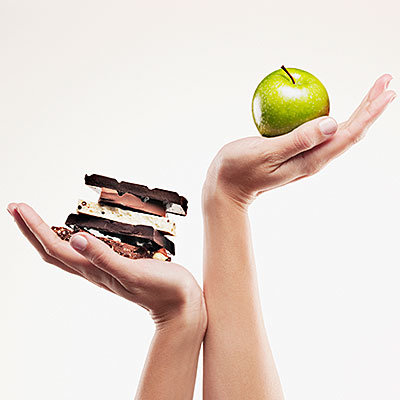
Myth: Healthy food doesn't taste good
Experts recommend that you try a food 10 times before concluding that you don't like it. No, seriously: A 2010 study found that children offered the same veggies once a week over the course of 10 weeks reported liking items they'd enjoyed less in previous weeks. Also, if you've been eating a lot of processed foods, their hidden additives can mess with your palate, making you crave more salt and sugar (and making whole foods taste dull in comparison). Retrain your taste buds by gradually cutting back on packaged food, cooking at home as much as possible.
15 of 28
16 of 28
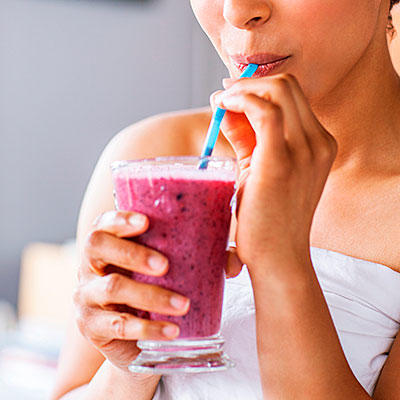
Myth: Meal-replacement shakes should be avoided at all costs
Though whole-foods advocates are fond of disparaging "meals in a can," the American Diabetes Association has reported that meal-replacement products, including shakes and bars, can be an effective way of slimming down if you're overweight or obese. "In some circumstances," Dr. Krikhely says, "we do recommend a liquid diet or meal replacement shakes plus added fiber for one to two weeks to extinguish bad habits and jump-start weight loss." The common thread here is that these products are helpful in extremely controlled settings; if you're sipping a shake to counteract a day of otherwise unmonitored eating, you're not doing yourself any favors.
16 of 28
17 of 28
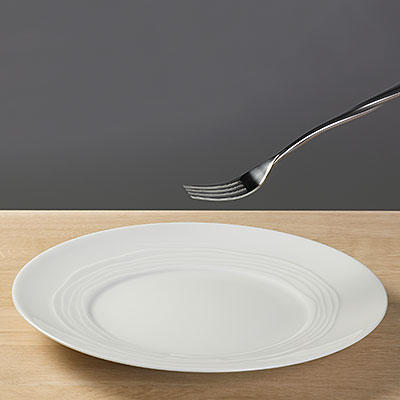
Myth: Skipping meals will help you cut calories
Skipping breakfast (or lunch, or dinner) will just make you hungry and cranky, and you're likely to blow through those "saved" calories (and more) when you're ravenous later in the day. "It's easy to overeat quickly and make poor food choices when you're starving and exhausted," Dr. Krikhely notes. In fact, a 2012 study found that women who missed meals lost eight fewer pounds over the course of a year than those who ate breakfast, lunch, and dinner every day.
17 of 28
18 of 28
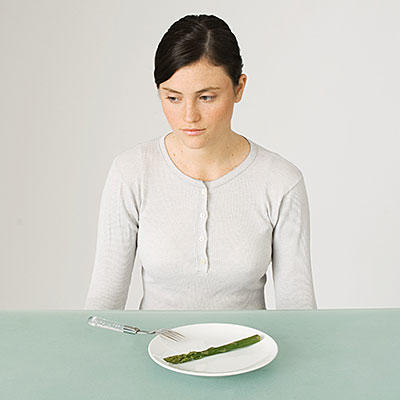
Myth: To lose weight, you have to get used to feeling hungry
If your belly is rumbling all day, you're probably not making smart food choices. Meals that are too low in protein and high in refined carbs can cause blood-sugar spikes—as well as crashes that will leave you feeling depleted and ravenous. Pick diet-friendly filling foods that are high in fiber (such as whole grains, fruits and vegetables, beans and seeds) along with high-quality proteins, and you'll feel full longer (even on fewer calories!). Plus, your blood sugar will be on a more even keel throughout the day.
18 of 28
19 of 28
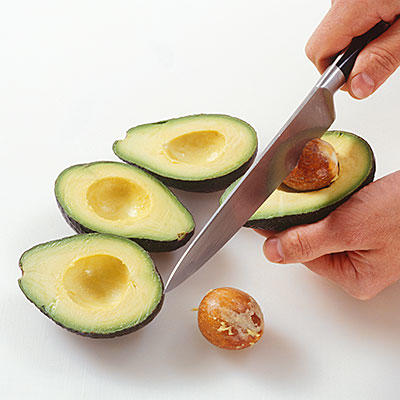
Myth: You can eat as much healthy fat as you want
Before you pick up your fourth piece of avocado toast, consider this: Though it's true that the monounsaturated fats found in liquid-based plant oils, nuts, seeds, and that Instagram-friendly avocado can have a positive effect on your health in moderation—and are vastly preferable to saturated fats and trans fats, which have a negative effect on your health—all fats contain 9 calories per gram. Eating too much of anything, even the "good" stuff, can hamper your weight-loss progress.
19 of 28
20 of 28

Myth: Alcohol is out
If you're trying to lose weight, yes, chances are you're going to need to cut down on alcohol consumption. Aside from the empty calories in alcohol itself, drinking can mess with your willpower, making you more likely to overeat or indulge in greasy, high-calorie foods (hello, midnight chili cheese fries!). But you don't have to cut booze out of your life completely. Limit yourself to just one drink, and go for lower-carb beverages like light beer or a dry wine—and skip the sugary mixers.
20 of 28
21 of 28
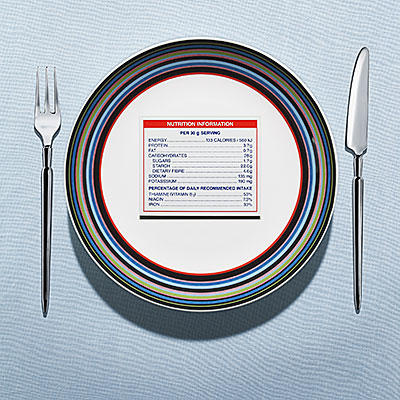
Myth: Labels don't lie
According to FDA guidelines, the caloric and fat content of a product can vary by up to 20% from what's printed on its nutritional label. This means that, say, a 100-calorie snack pack could actually ring in at 120 calories—and if you're counting calories based mostly on packaged foods, you could be way off by the end of the day. That doesn't mean you should ignore the labels entirely: "Research indicates that people who check out the back of packages lose more weight; they become more aware of and attuned to what they are eating and how it makes their bodies feel," Dr. Albers says.
21 of 28
22 of 28

Myth: You can't fight "fat genes"
While genes can play a role in obesity, you can still overcome that genetic tendency with diet and exercise. Remember, too, that the most common reason why some families are overweight while others aren't has nothing to do with genetics. Behaviors are inherited; children learn good and poor eating habits at their parents' dinner table. If your parents and other family members were or are overweight, you can still break the cycle of "environmental" obesity by resolving to make better choices at your table.
22 of 28
23 of 28
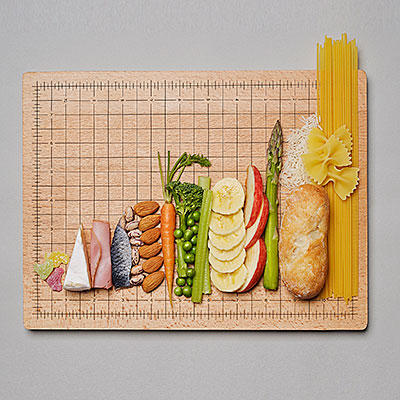
Myth: You don't need to track your food intake
Most people underestimate how much they eat. In a 2007 study in which diners at an Italian restaurant were filmed on a hidden camera, 31% couldn't remember afterward how much bread they ate, and 12% who were filmed eating bread said they hadn't had any at all (how's that for selective amnesia?). Giving a food diary a try—and comparing your notes to what you recall eating after, say, a week—will help you put a stop to mindless munching.
23 of 28
24 of 28

Myth: A calorie is a calorie
The truth is, there are high-quality calories (ones that come with nutrients and fiber, for example) and low-quality ones. This means that what you eat is just as important as how much. "Some approaches say, 'sure, have marshmallows for lunch as long as you stay under a certain calorie amount!'" says Albers. "What you eat does matter in terms of what's going on inside. A bowl of marshmallows will make your sugar spike and then drop. How you feel will drop, too—in an hour, you'll feel awful!"
24 of 28
25 of 28
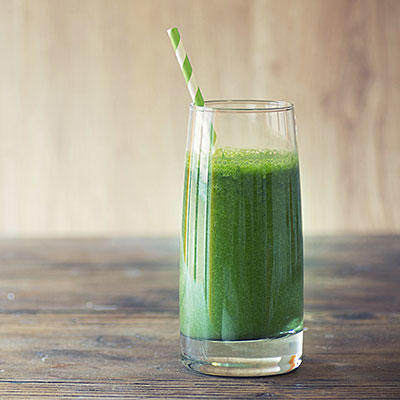
Myth: Green is always good
Kermit the Frog-colored smoothies are awfully healthy-looking, and they do crop up in the context of many weight-loss plans—but should green juice be synonymous with health? Not all juices are created equal; those that are sweetened with fruit juices and purées can be carb- and calorie-heavy, Dr. Krikhely notes, and therefore can lead to weight gain. Juices are also not as filling as whole produce; eating a salad or raw green veggies will leave you feeling more satiated (and less likely to snack).
25 of 28
26 of 28
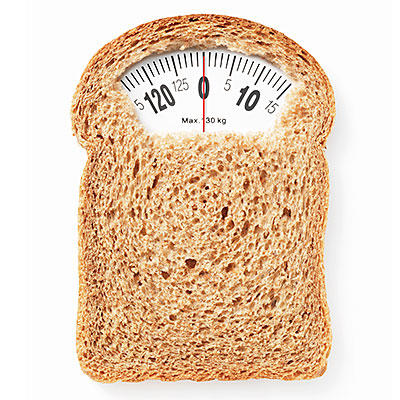
Myth: Nixing gluten results in weight loss
When people lose weight by going gluten-free, it's usually because they give up foods that contain both gluten and refined carbohydrates (such as pasta and baked goods). In other words, it's the absence of those fat-cell-feeding excess carbs that's actually making the difference in their waistlines. If you simply swap in gluten-free versions of the same packaged foods, you're unlikely to see much difference on the scale. (Ironically, some people who suffer from celiac disease gain weight after giving up gluten because their digestive systems are finally able to absorb the calories they consume.)
26 of 28
27 of 28
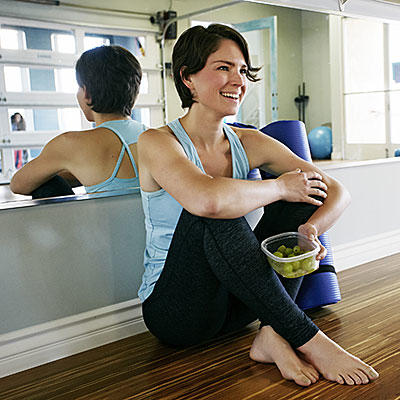
Myth: Once you find an eating-and-exercise plan that works, you're home free
Our bodies' requirements and capabilities fluctuate for all kinds of reasons, which means that the routines we set for them will need to change every now and then as well. "Understand that weight loss is a journey," Dr. Krikhely says. "What works may not always work. Your preferences may change. Life events may happen and cause you to fall off track. The weight can come back. This is normal—it is not a failure." Lasting success stems from knowing that adjustment is inevitable, and being open to it when the time comes to change.
27 of 28
